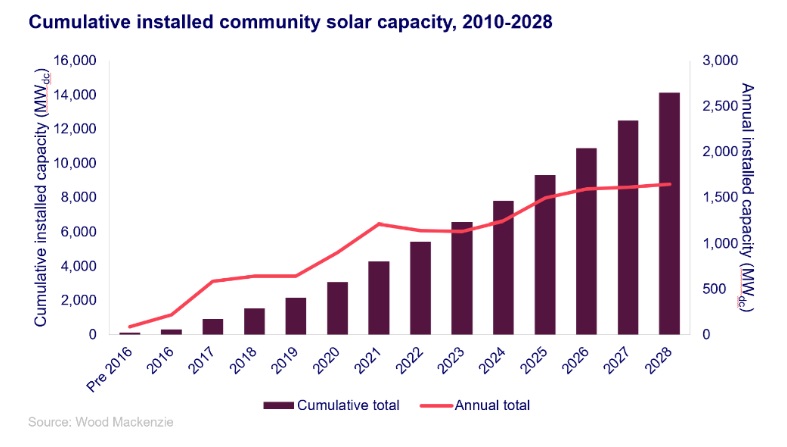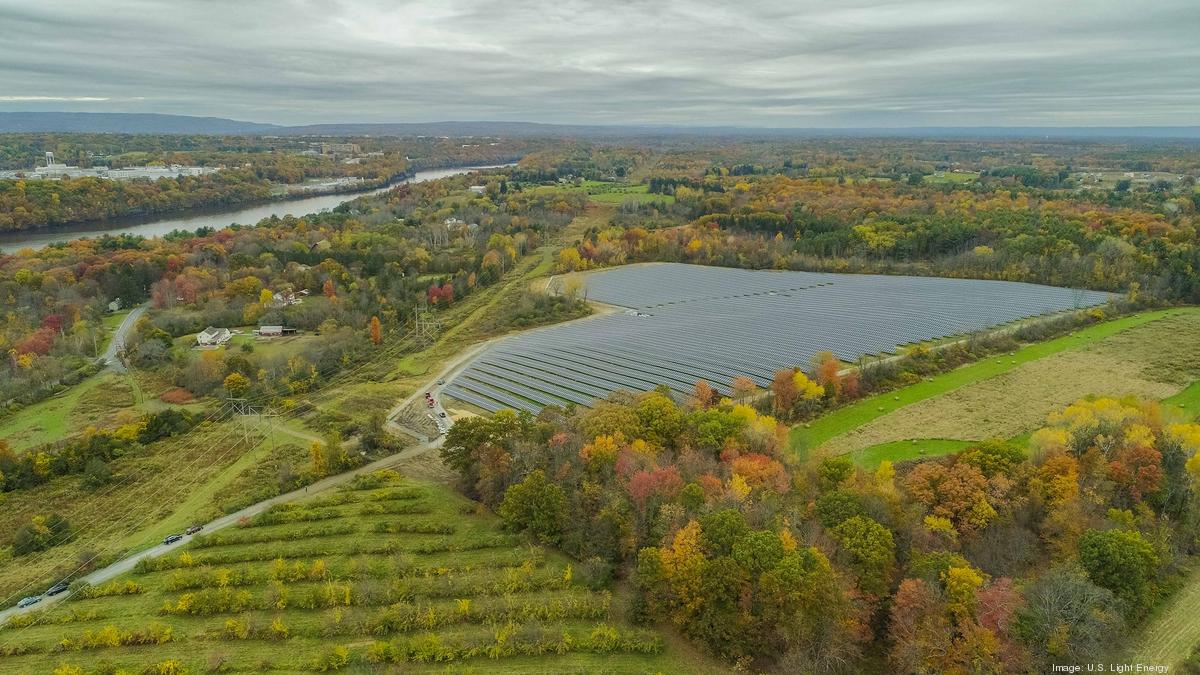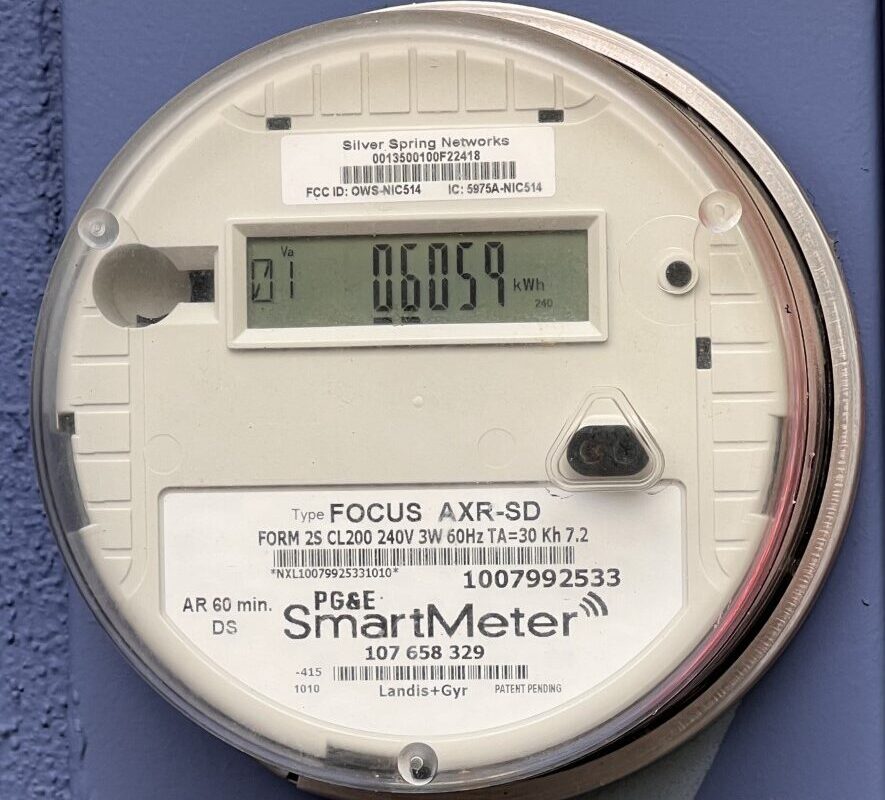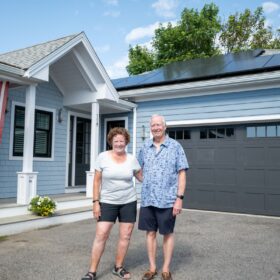The Coalition for Community Solar Access (CCSA) released its Policy Roadmap that includes a guidebook, model legislation, inclusive solar access solutions for low-to-moderate income subscribers and consumer protection best practices. It’s intended to serve as a blueprint for states without competitive community solar programs to pass legislation that supports programs. It also provides insight into how to maximize federal funding.
“Our Roadmap boils down nearly a decade of the best lessons we’ve learned from creating community solar markets across the country into a succinct set of documents,” says Molly Knoll, Vice President of Policy, CCSA. “With many states exploring the development of new, or revamped, community solar programming and federal funds ready to deploy, this felt like the perfect time to release this helpful guide for all our advocates.”
The community solar is on the rise as it brings economic and social benefits to all Americans seeking local, clean community solar energy. By its design it lets people benefit from solar energy who may be unable to install solar either due to financial restrictions or because they do not have a suitable rooftop for solar.
Wood Mackenzie expects 7.6 GW of new community solar will come online in existing state markets between 2024 and 2028, and the national total of community solar installations is expected to pass 10 GW of cumulative capacity in 2026.

The CCSA’s aim with the Roadmap is to help the industry continue on the upward trajectory it’s currently experiencing, which requires strong programmatic and policy decisions.
The Roadmap’s release coincides with the U.S. Environmental Protection Agency is set to deploy $7 billion to state applicants through its Solar for All program, a funding opportunity that has a goal of bringing solar energy to low-income households. Recipients were chosen based on their proposals to develop programs designed to serve communities facing barriers to distributed solar deployment, with 100% of funding supporting low-income and disadvantaged communities in all 50 states the District of Columbia, Puerto Rico and territories.
Supporting low-income households
As recently shown in community solar programs and research reports from Wood Mackenzie and the Lawrence Berkeley National Lab (LBNL) community solar has effectively expanded solar access to multifamily housing occupants, renters and low-income households. Based on a sample of 11 states, the LBNL study found that community solar adopters in 2023 were about 6.1 times more likely to live in multifamily buildings than rooftop solar adopters, 4.4 times more likely to rent, and earned 23% less annual income.
“The data speaks for itself: when states implement thoughtful policy programs that simplify income verification, billing, and expand access, we see immense growth in community solar adoption by low-to-moderate income households,” said Stephanie Burgos-Veras, senior manager of equity programs, CCSA. “We hope our Policy Solutions for Inclusive Solar Access primer can lead to more community solar programming being implemented — so that ultimately, more LMI households can benefit.”
The new CCSA Roadmap is intended to be used in conjunction with a companion document that provides Model Legislation for Community Solar Programs, that serves as a toolkit for policymakers to draft effective and sustainable community solar policies. The toolkit helps them tailor the program to community residents; kickstart the market with bill credit structure, oversight and administration; ensure long-term success by integrating community solar programs into existing utility and energy infrastructure of a state.
Also covered are potential challenges, the role of utilities, interconnection issues, program size and more. It also offers strategies to ensure that programs exist long into the future and continue to serve local residents.
Community solar legislation has been adopted in 19 states and the District of Columbia and multiple states have legislation in the works with nearly a dozen considering laws to create programs. Combined with the Solar For All program, CCSA believes that now is the time for policymakers to revisit the idea of bringing community solar to their state.
Find all the documents in the Policy Roadmap here under the “CCSA & Other Resources” tab.
This content is protected by copyright and may not be reused. If you want to cooperate with us and would like to reuse some of our content, please contact: editors@pv-magazine.com.









By submitting this form you agree to pv magazine using your data for the purposes of publishing your comment.
Your personal data will only be disclosed or otherwise transmitted to third parties for the purposes of spam filtering or if this is necessary for technical maintenance of the website. Any other transfer to third parties will not take place unless this is justified on the basis of applicable data protection regulations or if pv magazine is legally obliged to do so.
You may revoke this consent at any time with effect for the future, in which case your personal data will be deleted immediately. Otherwise, your data will be deleted if pv magazine has processed your request or the purpose of data storage is fulfilled.
Further information on data privacy can be found in our Data Protection Policy.